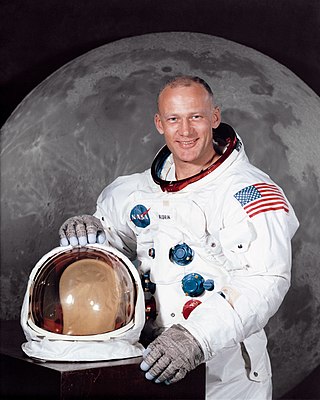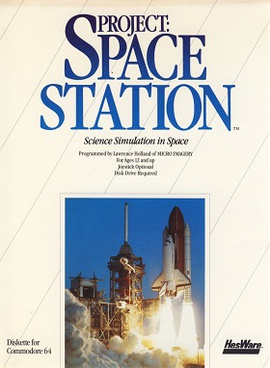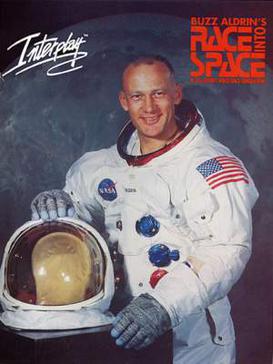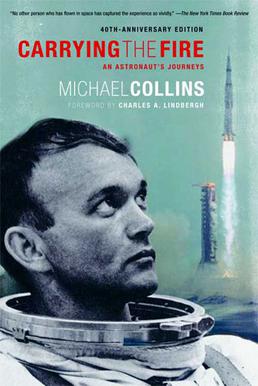
Liftoff! is a board game published by Task Force Games in 1989 that simulates the international space race to land astronauts on the Moon during the mid-20th century.

Liftoff! is a board game published by Task Force Games in 1989 that simulates the international space race to land astronauts on the Moon during the mid-20th century.
Liftoff! is a four-player game in which players direct the space programs of the U.S., the Soviet Union, a European consortium and an unnamed Asian country. Each player attempts to turn their space program budget — which fluctuates due to successes and failures as well as public opinion and event cards — into a successful space program. [1]
The first step, set in the 1950s, is to use research and development (R&D) to launch a safe rocket that places a satellite in orbit. Players then progress through the historical sequence of test programs — Mercury/Vostok, Gemini/ Voskhod, Apollo/Soyuz. [2] During the game, each director must make decisions about mission details, for example, what type of lunar lander to develop, or what type of hardware and what type of orbit to use to get from Earth to the Moon. [2] Each director must also decide on the pace of development. As critic Rony Reichhardt noted, "In most cases, the prudent thing to do is to go slowly and invest in the research that improves your chance of succeeding. But you can rush your missions if you want; it simply costs more money and reduces your safety margins." [3]
There are also optional rules for espionage, diplomacy, rescues, and bartering with opponents. [3]
The first player to successfully negotiate all of the test missions, land astronauts on the Moon and return them safely to Earth is the winner. [1]
Liftoff! was created by Fritz Bronner and was published by Task Force Games with artwork by Ken Hodges, Gary A. Kalin, and Todd Winter. The game was released at Origins Game Fair 1989, [4] but did not find an audience, and by January 1990, copies were being offered for sale at a deep discount. [1] The game quickly disappeared, and Task Force Games showed no interest in picking up an option to buy the rights from Bronner. [2]
Later in 1990, Bronner recruited a 22-year-old programmer, Michael McCarty, and together they redeveloped the board game into an MS-DOS video game. Astronaut Buzz Aldrin became a consultant, and the game was released in 1993 as Buzz Aldrin's Race into Space . [2]
In Issue 13 of the British magazine Games International , Mike Siggins was not sure what to make of the game when he first opened the box: "Although the materials are workable and reasonably well designed, there are very few of them and they lie forlornly at the bottom of the box. The map is one of the smallest I’ve seen, the cards depicting the hardware and astronauts are rather flimsy and the record sheets could be clearer." However, when Siggins started to play the game, he was pleasantly surprised, writing, "The system is cleverly designed and if the subject interests you there is a real sense of achievement at the end of a mission." Siggins concluded by giving the game a high rating of 8 out of 10, writing, "I know deep down that it is not going to appeal to everyone, yet there is definitely something there that triggered my interest. I suppose it is best described as a game in which to participate rather than play, like being involved in an unfolding story." [1]
In Final Frontier: The Magazine of Space Exploration, Tony Reichhardt felt that the game succeeded for the most part in translating the space program to a game board. However, he compared the level of complexity to that of a monster board wargame, and warned "Liftoff! does require an investment of time and concentration." However, Reichhardt noted that "once play begins, Liftoff! makes for an absorbing time." He concluded, "It all rings true, in more ways than one. Despite all the strategizing, a lot of times it seems to come down to a roll of the dice. Which, come to think of it, is probably the way NASA managers feel sometimes." [3]
In Issue 13 of The Escapist , Allen Varney called the game system "innovative, balanced and highly replayable, but complex and extremely hard to win." He concluded, "You face the same choices the United States and the USSR faced, and in making decisions you start to understand why history played out as it did." [2]

Apollo 11 was the American spaceflight that first landed humans on the Moon. Commander Neil Armstrong and Lunar Module Pilot Buzz Aldrin landed the Apollo Lunar Module Eagle on July 20, 1969, at 20:17 UTC, and Armstrong became the first person to step onto the Moon's surface six hours and 39 minutes later, on July 21 at 02:56 UTC. Aldrin joined him 19 minutes later, and they spent about two and a quarter hours together exploring the site they had named Tranquility Base upon landing. Armstrong and Aldrin collected 47.5 pounds (21.5 kg) of lunar material to bring back to Earth as pilot Michael Collins flew the Command Module Columbia in lunar orbit, and were on the Moon's surface for 21 hours, 36 minutes before lifting off to rejoin Columbia.

Neil Alden Armstrong was an American astronaut and aeronautical engineer who in 1969 became the first person to walk on the Moon. He was also a naval aviator, test pilot, and university professor.

Buzz Aldrin is an American former astronaut, engineer and fighter pilot. He made three spacewalks as pilot of the 1966 Gemini 12 mission. He was the Lunar Module Eagle pilot on the 1969 Apollo 11 mission and became the second person to walk on the Moon after mission commander Neil Armstrong.

Michael Collins was an American astronaut who flew the Apollo 11 command module Columbia around the Moon in 1969 while his crewmates, Neil Armstrong and Buzz Aldrin, made the first crewed landing on the surface. He was also a test pilot and major general in the U.S. Air Force Reserve.

Gemini 12 was a 1966 crewed spaceflight in NASA's Project Gemini. It was the 10th and final crewed Gemini flight, the 18th crewed American spaceflight, and the 26th spaceflight of all time, including X-15 flights over 100 kilometers (54 nmi). Commanded by Gemini VII veteran James A. Lovell, the flight featured three periods of extravehicular activity (EVA) by rookie Edwin "Buzz" Aldrin, lasting a total of 5 hours and 30 minutes. It also achieved the fifth rendezvous and fourth docking with an Agena target vehicle.

Bart Winfield Sibrel is an American conspiracy theorist who has written, produced, and directed films suggesting that the Apollo Moon landings between 1969 and 1972 were staged by NASA under the control of the CIA. He has created four independent films promoting the ideas, with the first having been the film A Funny Thing Happened on the Way to the Moon (2001).

Project Gemini was the second United States human spaceflight program to fly. Conducted after the first, Project Mercury, and while the Apollo program was still in development, Gemini was conceived in 1961 and concluded in 1966. The Gemini spacecraft carried a two-astronaut crew. Ten Gemini crews and 16 individual astronauts flew low Earth orbit (LEO) missions during 1965 and 1966.
Man In Space Soonest (MISS) was a United States Air Force (USAF) program to put a man into outer space before the Soviet Union. The program was cancelled on August 1, 1958, and was replaced by NASA's Project Mercury. Only two men from the program would actually reach outer space. The first, Joseph A. Walker, did so two or three times in X-15 rocket plane tests in 1963. The other, Neil Armstrong, became a NASA astronaut in 1962, flew on Gemini 8 in 1966, and in 1969 on Apollo 11 becoming the first person to walk on the Moon.

Voyage is a 1996 hard science fiction novel by British author Stephen Baxter. The book depicts a crewed mission to Mars as it might have been in another timeline, one where John F. Kennedy survived the assassination attempt on him on 22 November 1963. Voyage won a Sidewise Award for Alternate History, and was nominated for the Arthur C. Clarke Award in 1997.

Project Space Station is a simulation game written for the Commodore 64 computer published in 1985 by HESware. It was ported to the Apple II and DOS in 1987.

NASA Astronaut Group 3—'The Fourteen'—was a group of fourteen astronauts selected by NASA for the Gemini and Apollo program. Their selection was announced in October 1963. Seven were from the United States Air Force, four from the United States Navy, one was from the United States Marine Corps and two were civilians. Four died in training accidents before they could fly in space. All of the surviving ten flew Apollo missions; five also flew Gemini missions. Buzz Aldrin, Alan Bean, Gene Cernan and David Scott walked on the Moon.

Magnificent Desolation: Walking on the Moon 3D is a 2005 IMAX 3D documentary film about the first humans on the Moon, the twelve astronauts in the Apollo program.

Buzz Aldrin's Race Into Space, frequently abbreviated BARIS, is a 1993 space simulation strategy game for MS-DOS. The player takes the role of Administrator of NASA or head of the Soviet space program with the ultimate goal of being the first side to conduct a successful crewed Moon landing. It was developed by Strategic Visions and published by Interplay Productions as a computer version of Liftoff!, a 1989 board game developed by Fritz Bronner. BARIS was re-released in 1994 on CD-ROM, incorporating the earlier updates to the floppy disk version, a few new updates, improved video of the mission launches, and new multiplayer modes.

Mission: Space is a space exploration-themed pavilion and attached centrifugal motion simulator attraction located in the World Discovery section of Epcot at Walt Disney World in Bay Lake, Florida. The attraction simulates what an astronaut might experience aboard a spacecraft on a mission to Mars, from the higher g-force of liftoff, to the speculative hypersleep. The pavilion also includes the Mission Space: Cargo Bay gift shop, the Advanced Training Lab interactive play area and Space 220 Restaurant.

Apollo 11 was the first human spaceflight to land on the Moon. The 1969 mission's wide effect on popular culture has resulted in numerous portrayals of Apollo 11 and its crew, Neil Armstrong, Buzz Aldrin, and Michael Collins.

Mars to Stay missions propose astronauts sent to Mars for the first time should intend to stay. Unused emergency return vehicles would be recycled into settlement construction as soon as the habitability of Mars becomes evident to the initial pioneers. Mars to Stay missions are advocated both to reduce cost and to ensure permanent settlement of Mars. Among many notable Mars to Stay advocates, former Apollo astronaut Buzz Aldrin has been particularly outspoken, suggesting in numerous forums "Forget the Moon, Let’s Head to Mars!" and, in June 2013, Aldrin promoted a crewed mission "to homestead Mars and become a two-planet species". In August 2015, Aldrin, in association with the Florida Institute of Technology, presented a "master plan", for NASA consideration, for astronauts, with a "tour of duty of ten years", to colonize Mars before the year 2040. The Mars Underground, Mars Homestead Project / Mars Foundation, Mars One, and Mars Artists Community advocacy groups and business organizations have also adopted Mars to Stay policy initiatives.

Carrying the Fire: An Astronaut's Journeys is the autobiography of the Gemini 10 and Apollo 11 astronaut Michael Collins. It was released in 1974 with a foreword by the aviator Charles Lindbergh. The book was re-released in 2009 to coincide with the 40th anniversary of the first crewed lunar landing, and again for its 50th anniversary, in 2019.

Neutral buoyancy simulation with astronauts immersed in a neutral buoyancy pool, in pressure suits, can help to prepare astronauts for the difficult task of working while outside a spacecraft in an apparently weightless environment.

Apollo 11 was the first human spaceflight to land on the Moon. In the decades after its 1969 mission took place, widespread celebrations have been held to celebrate its anniversaries.